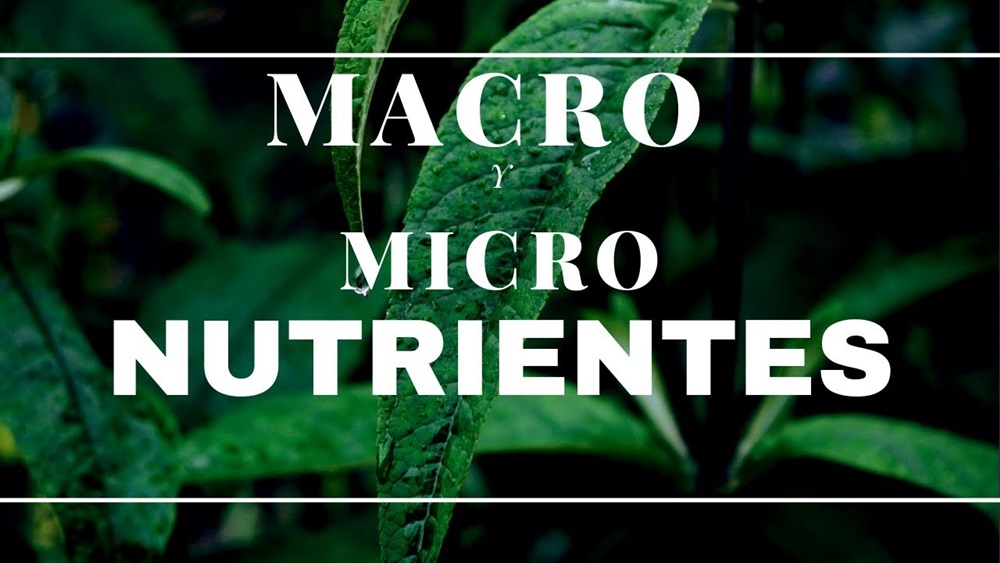El plant nutrition process it is one of the most important for them to be able to survive and obtain the matter and energy that are essential for their life and their growth process. Today we are going to learn everything about this important process and how it works.

How is the process of plant nutrition?
The process by which The plant nutrition takes place is divided into different parts. Next we will know each one of the stages of plant nutrition:
Plants make their own food
A common question iswhat is plant nutrition? Plants have the ability to manufacture their own food, for this reason, they do not need to extract their food from other living beings. The plant feeding process consists of three stages: taking substances from the soil and the air, transforming these substances into its own food and distributing this food throughout its "body". In addition to this, for plants to be able to take advantage of their food, they will need constant breathing, something that happens with all living beings.
Unlike other living beings such as animals and fungi, plants are capable of creating their own types of plant nutrition from:
- Water and mineral salts that they absorb from the soil through their roots.
- Gases that they manage to absorb from the air and that enter through their leaves.
- Sunlight.
Taking these components, plants are able to manufacture other vital substances for their growth and to be able to carry out their basic functions that are vital. A part of the food that is not used for the fulfillment of these functions is stored in its roots, leaves, fruits or in its seeds.
Nutrient input
Plants take in water and mineral salts through their roots through so-called absorbent hairs, giving rise to a mixture known as crude sap. This raw sap makes its way up the stem of the plant until it reaches the leaves, they do this through very thin tubes called “woody vessels”.
While, carbon dioxide is absorbed by their leaves through quite small openings that they have and that are called stomata.
Photosynthesis
Photosynthesis is the process by which plants are able to make their own food. It occurs in all Kind of leafs of the plants. Both the water and the mineral salts found in raw sap mix with carbon dioxide and become what we know as processed sap, which is food for plants.
For the process of transforming raw sap into elaborated sap to occur, sunlight will be necessary, which is why plants only perform photosynthesis during the day, since they need natural light for it to occur.
Sunlight is captured by plants through chlorophyll, which is their own substance, it is green, which is why they have this characteristic color. One of the results of the photosynthetic process is that the plant can eliminate oxygen.
During the process of photosynthesis, plants are also capable of creating oxygen, which is then released into the atmosphere of our planet. This oxygen that they release is what all living beings use to be able to breathe and live.
For the process of photosynthesis to occur, the following elements must be present:
- That chlorophyll is present in the perenchyma.
- The presence of raw sap is essential.
- The carbon dioxide that the plant has absorbed through the stomata of its leaves.
- Solar energy.
Distribution of the sap
When the elaborated sap is produced, it is distributed throughout the plant through some fine tubes that they have, which are called Liberian vessels. These vessels are very different from the woody vessels which are responsible for transporting the crude sap. In this way, there is no possibility that both types of sap end up mixing with each other.
This distribution process is very important because there are places in the plants that do not carry out photosynthesis processes (such as the root or the stems), however, these, like the rest of the plant, need to receive their portion of food, That is why distribution is essential.
Plant respiration
Just like any other living being, plants also need the breathing process, which is why it is always essential to know how do plants eat and breathe. That is why they take in the oxygen found in the air that surrounds them and expel carbon dioxide. The oxygen they absorb is combined with their food, this is how energy is created. Plants have a constant respiration, that is, they do it both during the day and at night.
Each Parts of a plant needs to receive oxygen. Plants need sunlight to be able to carry out their photosynthetic process and thus make their own food. In order to carry out this process, water, mineral salts, carbon dioxide and sunlight are necessary. In addition to this, it is very important that they can breathe and do so throughout the day.
Types of Plant Nutrients
Based on the content of each of the nutrients absorbed by the plant, we can say that they are classified in two ways: macronutrients and micronutrients.
Macronutrients
These are characteristic for having a concentration greater than 0.1% of dry matter. If we talk about the chemical elements that have a higher concentration are: carbon, hydrogen and oxygen, these are found in water and in the Earth's atmosphere.
Now, nitrogen, phosphorus and potassium are considered primary macronutrients, which is why they can be found mostly in fertilizers. If we go to the secondary macronutrients, we find calcium, magnesium and sulfur.
Micronutrients
Also known by the name of trace elements, they are those that do not exceed 0.1% of the dry matter. Among these elements we can find: chlorine, iron, boron, manganese, zinc, copper, nickel and molybdenum.
There are some other elements that can be beneficial and essential for certain types of crops and that are part of the plant nutrition process, among them are: sodium, silicon and cobalt.

